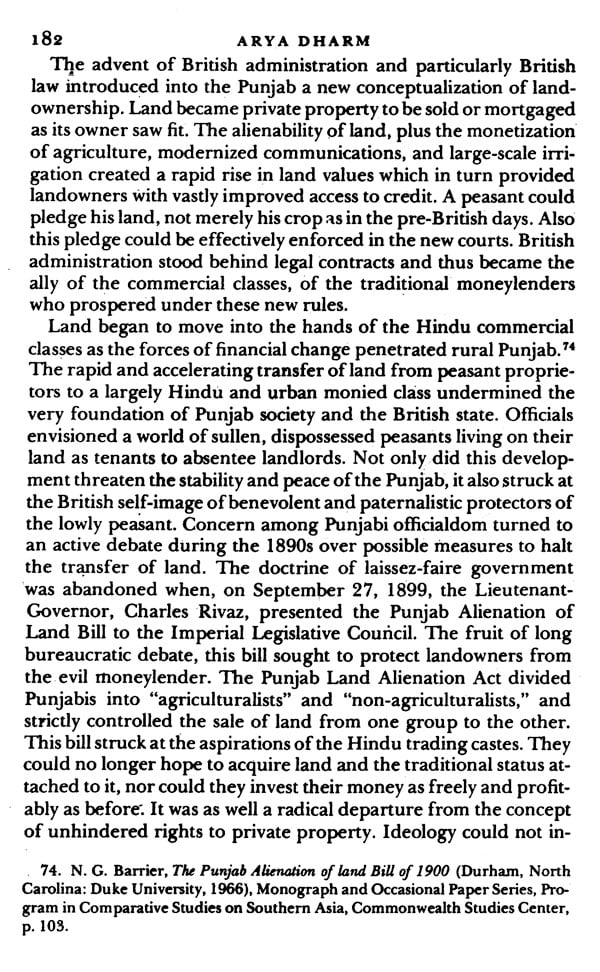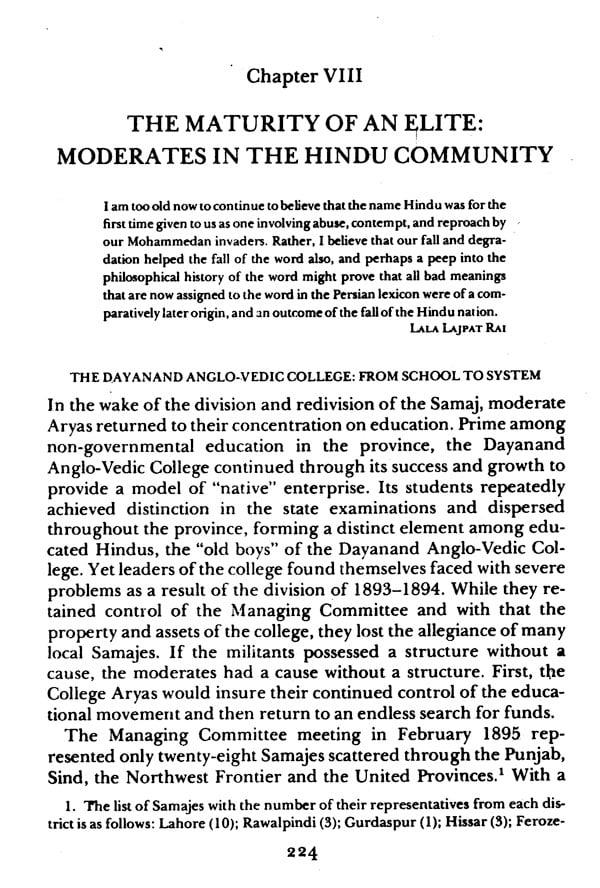
Arya Dharm (Hindu Consciousness in 19th-Century Punjab)
Book Specification
| Item Code: | NAZ776 |
| Author: | Kenneth W Jones |
| Publisher: | Manohar Publishers and Distributors |
| Language: | English |
| Edition: | 2006 |
| ISBN: | 9788173047091 |
| Pages: | 364 |
| Cover: | paperback |
| Other Details | 9.00 X 6.00 inch |
| Weight | 520 gm |
Book Description
More than a fifth of the world's farmers live in India, The major focus of this book is on modernizing movements—social, religious, and cultural—among Punjabi Hindus from the 1860s through World War I. The Arya Samaj, one such movement, dominates the volume, as it dominated a half-century of change in the Punjab.
Prof. Jones begins with an account of the earliest individual attempts of reformers to adapt their cultural traditions to the new world of the British Empire. He examines the development of new ideologies, the creation of group consciousness based on them, and the resultant expression of an overt Hindu politics. He demonstrates that the process underlying cultural interaction between the British and Punjabi Hindus, beginning in a particularistic manner, found expression by the twentieth century in the demands of a politicized Hindu elite. He also delineates the pattern of communal conflict among Hindus, Muslims, and Sikhs and the dynamics of the British Raj that contributed to this conflict.
Existing historiography on modern South Asia generally deals with either British imperial history or nationalist political history. Prof. Jones is concerned instead with religious: cultural, political and social developments within the world of South Asians. To illuminate them he draws on a wide range of sources: tracts, pamphlets, institutional records, unpublished manuscripts, government documents, periodicals, memoirs, and autobiographies in Hindi, Urdu, and English as well as materials in Sanskrit and Punjabi.
Kenneth W. Jones was Professor of History at Kansas State University, Manhattan, U.S.A.
Cultural interaction between the British and South Asians, between ruler and ruled, dominates the history of nineteenth-century British India. The conquest of South Asia and the establishment of the British Raj brought Western civilization through the medium of British culture into direct contact with the Indo-Muslim civilization of South Asia. From this confrontation emerged a new colonial culture neither wholly English nor completely South Asian, but a unique way of life peculiar to the British Raj. By the mid-nineteenth century, members of this colonial ruling class saw themselves in terms of the empire. They became "sahibs" and "memsahibs"—social roles explicable to both their countrymen at home and to the conquered peoples of South Asia. Social roles cannot exist without a standardized explanation—that is, without ideology. British imperialism, the mythology of empire, provided the underlying rationalization for British colonial identity. The various historical processes that created social roles and formulated ideology were inextricably bound by mutual reinforcement. Once established, this imperial identity expressed itself daily in the dynamics of colonial culture.
South Asians drawn into the colonial milieu of the British Raj, into daily contact with their English rulers, also were compelled to create a new world of their own. They started from a variety of reference points—from the great tradition of Indo-Muslim civilization, from their own regional culture, and from the specific traditions of their castes and subcastes. Success beckoned as the British empire opened new opportunities for wealth, power, and prestige. Those who could bridge the gap between their own culture and British colonial society, who would learn the ways of the white man and become adept in his language, constituted a new class in South Asian society. The members of this class, educated and anglicized, paid a price for their success. They became both marginal and alienated as they commuted daily from their own cultural environment to the world in which they worked and studied, and back again to their own society. Some felt the pain of psychological separation acutely; others did not; but all were affected and none could escape.
Book’s Content and Sample Pages





















